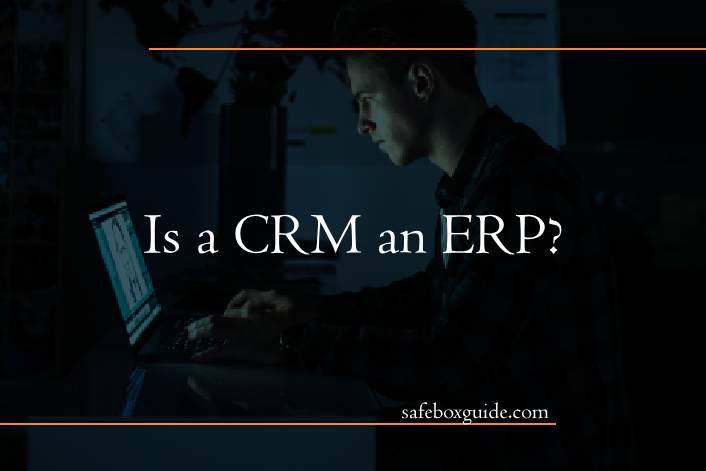In the realm of business management software, acronyms like CRM (Customer Relationship Management) and ERP (Enterprise Resource Planning) often emerge, sometimes causing confusion due to their apparent similarities. While both systems play pivotal roles in streamlining business operations, they serve distinct purposes and cater to different aspects of an organization’s workflow.

Contents
Understanding CRM and ERP
A CRM system revolves around customer-centric activities. It serves as a comprehensive tool for managing and nurturing customer relationships throughout their lifecycle – from initial contact to post-purchase support. A CRM system typically includes functionalities for tracking customer interactions, managing sales leads, organizing marketing campaigns, and providing customer support. The primary goal of a CRM is to enhance customer satisfaction, streamline communication, and ultimately drive sales growth.
On the other hand, an ERP system is a more extensive software suite that focuses on optimizing internal processes and resource management. ERP solutions integrate various business functions like finance, human resources, inventory, procurement, manufacturing, and distribution into a unified platform. The core objective of an ERP system is to enhance operational efficiency, facilitate data flow across departments, and provide insights that aid in strategic decision-making.
Key Differences
1. Scope and Focus
– CRM: Primarily focused on managing customer interactions, sales, and marketing activities.
– ERP: Encompasses broader organizational operations including finance, HR, procurement, inventory, and more.
2. User Base
– CRM: Mainly used by sales, marketing, and customer support teams to track customer interactions and improve relationships.
– ERP: Used by various departments including finance, procurement, manufacturing, and management for efficient resource management.
3. Data Flow
– CRM: Deals with customer-related data such as contact information, sales history, and communication records.
– ERP: Handles data related to internal processes, transactions, inventory levels, financial metrics, and more.
4. Primary Goal
– CRM: Enhancing customer relationships, increasing sales, and improving customer satisfaction.
– ERP: Improving operational efficiency, optimizing resource allocation, and facilitating data-driven decision-making.
Synergies between CRM and ERP
While CRM and ERP systems serve distinct purposes, they can complement each other when integrated properly. Organizations that leverage both systems can create a seamless flow of information across customer interactions and internal operations. Here’s how the two systems can synergize:
1. 360-Degree Customer Insights
Integrating CRM with ERP enables a comprehensive view of customer data, empowering sales and customer support teams with information about order history, payment status, and customer preferences.
2. Efficient Order Management
When an ERP system communicates with a CRM, the order process becomes smoother. Sales teams can check product availability in real-time and provide accurate delivery timelines, enhancing customer satisfaction.
3. Personalized Marketing
Data shared between CRM and ERP systems can inform marketing campaigns. For instance, knowing which products are selling well can guide targeted marketing efforts.
4. Accurate Financial Reporting
Integrating ERP’s financial data with CRM can aid in tracking sales revenue, calculating customer acquisition costs, and evaluating the ROI of marketing campaigns.
In the debate of whether a CRM is an ERP, the answer lies in their distinct functions and focal points. A CRM is tailored to manage customer relationships, while an ERP encompasses broader organizational processes. However, the synergy between CRM and ERP can prove highly beneficial, enhancing customer experiences through streamlined internal operations and fostering a data-driven approach to decision-making. To harness the full potential of both systems, organizations should carefully assess their needs, understand the compatibility of the chosen systems, and integrate them strategically to achieve a harmonious and efficient workflow.

